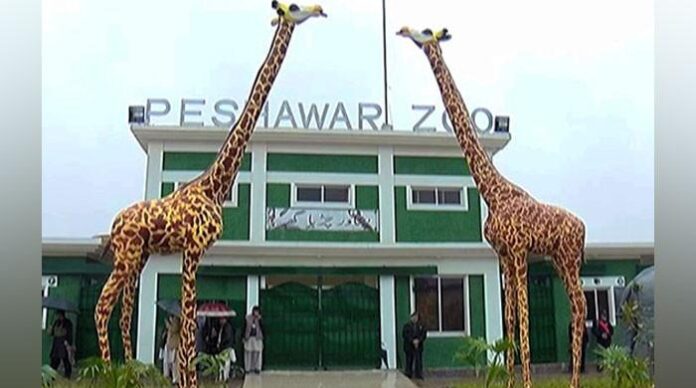PESHAWAR, Apr 02 (APP): The Peshawar Zoo saw a vibrant surge of visitors on the third day of Eid-ul-Fitr, with families, especially children, flocking to the wildlife sanctuary to celebrate the joyous occasion amid funfair and excitement.
The excitement was palpable as kids, accompanied by their parents, explored the zoo’s diverse collection of wild animals and enjoyed the serene, lush environment.
The zoo’s expansive layout, set on 29 acres near the University of Peshawar, boasts Pakistan’s largest collection of native and exotic wildlife.
At the entrance, impressive statues of an elephant and a giraffe capture the attention of visitors, sparking curiosity from those passing by Rahatabad Road.
Among the delighted visitors was Anaya Khan, a 9-year-old student from Nowshera district, who couldn’t contain her joy after visiting the zoo for the first time.
“Seeing wild animals like the cobra snake, lion, falcons, and giraffes with my own eyes was a dream come true today,” said Anaya, beaming with excitement.
“A big thank you to my papa for fulfilling my childhood dream today.” Like many others, Anaya was also taken aback by the zoo’s efforts to provide a natural habitat for the animals, as well as the well-maintained facilities for visitors.
The zoo’s wide array of wild species remained the center of attention, with children and families captivated by the lions, bears, tigers, giraffes, and the majestic falcons.
Visitors came from far-flung regions such as Khyber, Kohat, Nowshera, Charsadda, Mardan, Mohmand, and Swabi, as well as the host city, Peshawar. These visitors were warmly greeted by wildlife experts, who provided educational information on the animals.
The zoo, established by the Khyber Pakhtunkhwa Wildlife Department, is home to a diverse range of animals and birds from across Pakistan.
Its exhibits, such as the large eagle enclosure, where brown and black eagles soar, are particularly popular. The zoo also houses zebras, camels, deer, ducks, pheasants, and a variety of birds that intrigue visitors.
For those wishing to explore the zoo in a shorter time, a safari bus is available, while a restaurant provides food services.
Additionally, the zoo offers free rides on swings, camels, and even a miniature train – all contributing to an enjoyable experience for children.
Lecturer Sundas, who brought her daughter from Nowshera, praised the zoo as a gift to the people of Peshawar, enhancing both the city’s beauty and the well-being of its residents.
“In the past, I traveled to Islamabad and Lahore to visit zoos. This year, I didn’t need to go anywhere else because Peshawar Zoo has become a great alternative,” she said.
Sundas, whose children were particularly drawn to the falcons, also emphasized the zoo’s educational value.
“It’s not just a place of entertainment; it’s also an invaluable source of education and research for students of wildlife and zoology,” she added.
However, she also pointed out areas for improvement, such as the need for proper shelters, shade, and more trees for the animals, as well as better medical facilities for their care.
She suggested the establishment of a testing laboratory on the premises to prevent future illnesses among the animals, as well as a revision of the zoo’s entrance fees, recommending that small children be exempted from the charge.
Experts at the zoo also urged visitors to behave responsibly, advising against throwing stones or teasing the animals.
The zoo’s management emphasized the importance of maintaining cleanliness and urged visitors to cooperate with staff to ensure the zoo remains a safe and enjoyable place for everyone.
As the Eid holidays came to an end, the zoo stood as a symbol of fun, education, and bonding, not just for the people of Peshawar but for visitors from across Khyber Pakhtunkhwa and beyond.
It’s clear that the Peshawar Zoo has become more than just a wildlife sanctuary; it’s now an integral part of the region’s cultural and social fabric.

